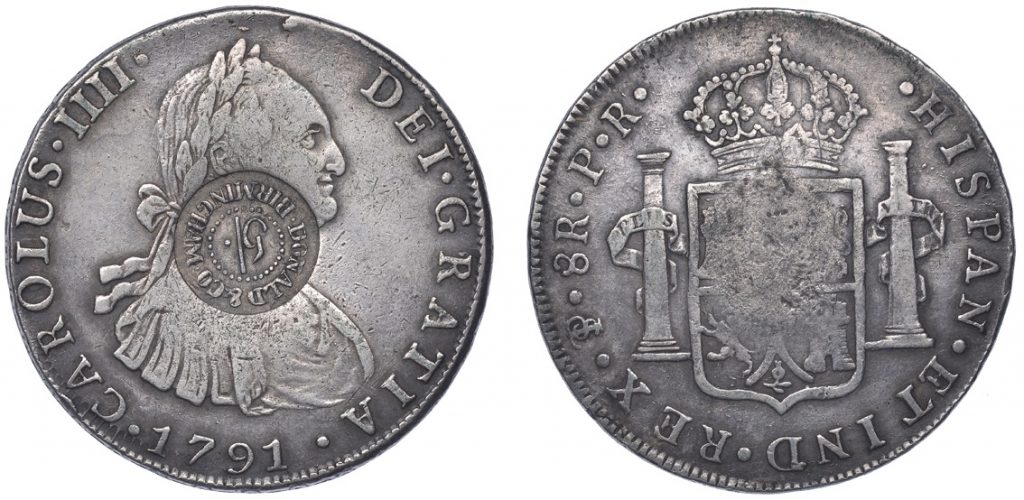
Online collections
monedastodas.com
All collections » Tokens » "Donald"
The customer of the token was William Donald, the owner of Donald & Co, which held a leading role in the production of hosiery in Birmingham and Nottingham.

On the front side in an oval of buds, the inscription: "DONALD & CO STOCKING MANUFACTURERS WHOLESALE & RETAIL.", circular legend: "PROMISSORY HALFPENNY PAYABLE AT NOTTING.M OR".
The reverse side depicts a beehive and
a swarm of bees around it. Circle legend: "NO 29 BULL STREET
BIRMINGHAM 1792".
Perhaps the production was located in the
Nottingham suburb of Beestone, one of the symbols of which are bees, which could
also be a trademark of the company.
Edge is smooth.
Engraver: Vayon, producer: Kempson. 30
cwts released.

There are single copies of coins in denominations of 5 shillings, which the company issued using the countermark "DONALD & CO · BIRMINGHAM · 5/." in Bolivian 8 reais.
In 1589, the first hand knitting machine was invented by the English parish priest William Lee. William's invention was prompted by his beloved from a poor family, who knitted stockings on knitting needles. He often observed the work and as a result came up with ways to facilitate it. However, the proud knitter did not reciprocate, so William, hoping to make money, decided to present the machine to Queen Elizabeth I. But the queen forbade the use of the invention, deciding that it would ruin the poor knitters.
William went to France, where King Henry IV appreciated his work. Settling in Rouen, William, along with several assistants, opened his own knitting workshop. After William's death, they returned to England along with all the equipment. This time, the homeland received them more cordially and for several decades the monopoly of machine knitting belonged to England. In 1656, the French sent the mechanic Jean Guindre to England, where he found out the secrets of the loom, after which machine knitting spread to France, Germany, and then to Eastern European countries.